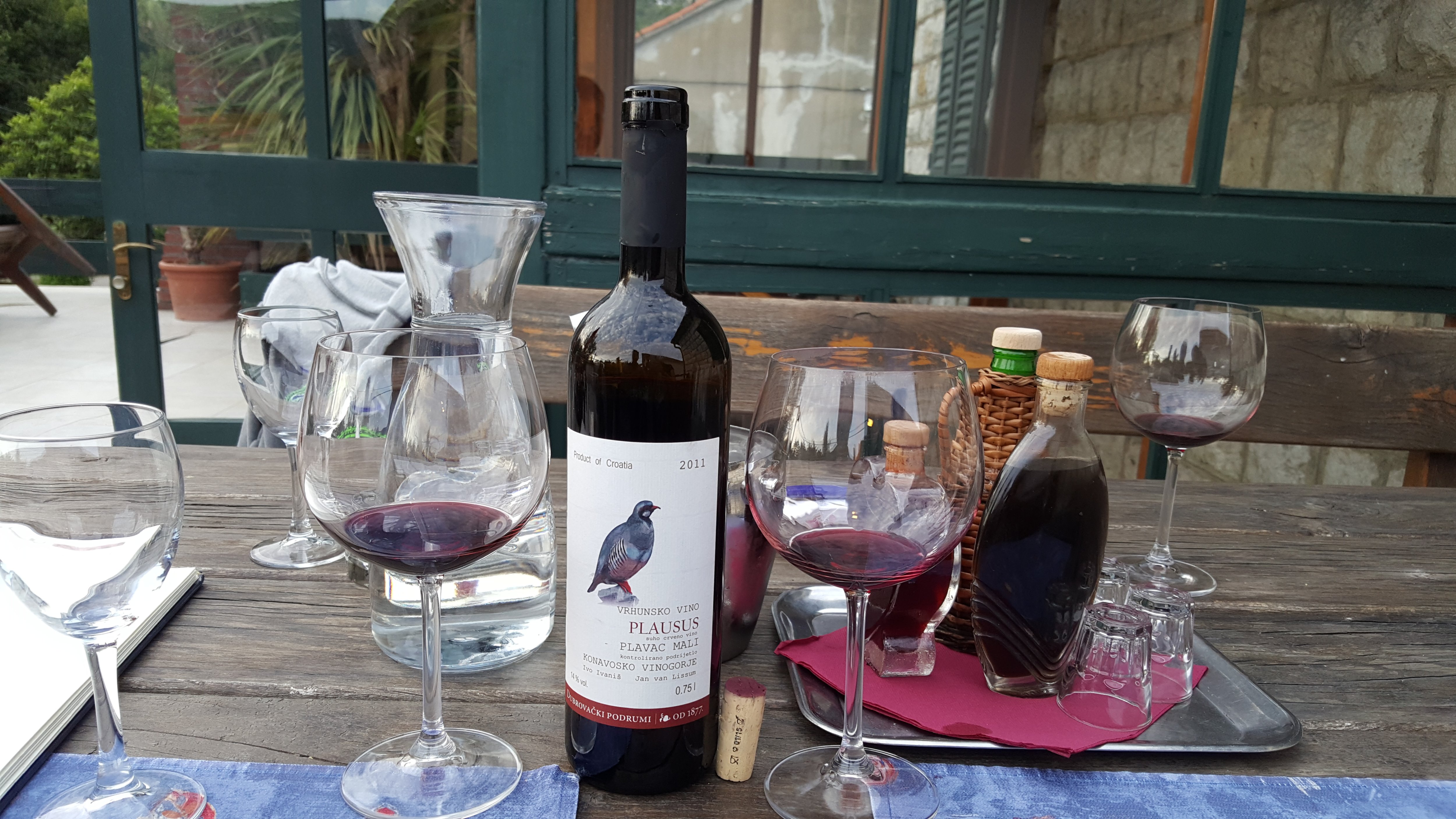Just back from a family trip to Croatia, so while the focus wasn’t wine, we enjoyed a pretty broad set of producers over 10 days starting in Split and ending in Sibenik with a stop in Korcula.
Drank a bunch of Pošip and Grk, several Rukatac, a few other whites like Crvik’s very nice “Tezoro” Malvasija Dubrovacka (of which there are two versions I believe, one stainless and one barreled if I’m not mistaken), a few sparklers, a few rose, a few orange wines, and a few dessert wines as well. The whites were uniformly nice - mostly all a great combination of easy-drinking and interesting, high in minerality, lively acidity, sometimes apricot-y and often floral, akin to many Italian whites from right across the Adriatic to my palate. The reds? Not my thing since they lean big/tannic/higher alcohol, which might work better if I were visiting in cooler months. They like to say Plavac Mali is an ancestral relative of Zin, and I could certainly see similarities.
Two producers I was most impressed with and would love to spend more time with were Krajančić in Korcula and Bibich outside Skradin/Sibenik. Krajančić’s 2015 Pošip Korkyra Melaina (three years in barrique) was wine of the trip by a good margin. Fascinating and far more complex than it’s more easy-going compatriots. We visited Bibich for lunch (highly recommended), but my favorite wines of theirs were the ones served at Pelegrini restaurant in Sibenik (Michelin 1 star), where the winemaker and chef partner on a range of wines dubbed Bibich+Stefan. Their Borgo di Mare Dolac (made from the Plavina grape I believe) was my favorite and probably the most elegant red of the trip - though I must admit I am not a fan of most of the Croatian reds (Plavac Mali or more mainstream blends for that matter).
Had a super lovely visit at old-school, unmarked, garagiste-y producer Branimir Cebalo on Korcula for Grk. His wife Maja (calls him the winemaker, and herself the wineTALKER) showed us great hospitality, and I brought home a few of their inexpensive but delightful wines. It took me a while to find their place, and only succeeded because she spotted me down the street and shouted over with directions!
Meals at two of the country’s top restaurants - Pelegrini in Sibenik and LD Terrace (Lesic Dimitri Palace) in Korcula town - provided a great chance to taste a spectrum of well-chosen wines by doing the tasting menus with wine pairings. Highly recommended, especially for Pelegrini to have your only opportunity to taste the Bibich+Stefan wines. And both are top-notch creative Michelin star meals rooted in local culture and in really lovely settings - pricey, but not compared to similar restaurants in Italy or elsewhere in Europe.
Dining at Bibich up in the hills is a must. And LoLe wine bar in Korcula town is another if you ask me. Both showed tremendous hospitality and warmth. In fact, the people of Croatia we met were among the most friendly and welcoming we’ve encountered in all of Europe. Also, if you need any help planning a trip, I know a Croatian/American chef (lives in Zagreb and Charlotte!) who arranges food and wine tours and knows many of the producers (and top chefs) very well - check out Captivating Croatia’s Richard Gruica who can help set up private tours, etc.
Most (but not all) of the wines we tried, in no particular order…
Bibich+Stefan Borgo di Terra (chardonnay), Borgo di Mare (plavina), Terra Nera (cabernet), dessert wine (?)
Bibich Debit, Posip, Brut Rose, G6 Red, Aleph Red
Grabovac Kujundzusa
Grabovac Sauvignon Blanc
Grabovac/Pelegrini Vira Viognier
Testament Winery Debit
Dordano Persuric Chardonnay Blend Misal Blanc de Blancs Brut
Branimir Cebalo Plavac Mali Opolo (rose)
Branimir Cebalo Plavac Mali
Branimir Cebalo Grk
Hrvatske Posip Divina Aurum (orange)
Violić Sagul Orange
Bire Grk sur lie
Bire Grk
Krajancic Posip
Krajancic Posip Korkyra Melaina
Krajancic Plavac Mali Moro (dessert)
Zure Grk
Zure Grk Bartul
PZ Nerica Pinot Crni Posip (rose)
Tasovac Posip
Merga Victa Posip
Antunovic Rukatac
Baran Rukatac
Crvik Malvasija Dubrovacka Tezoro
Galic Grasevina g-tocka
Galic Grande Reserve brut
Cara Posip (unsure producer!)
Pepejus Markus
(dang that’s a lot! though a big chunk of them were small pours as part of the two tasting menus we did)

